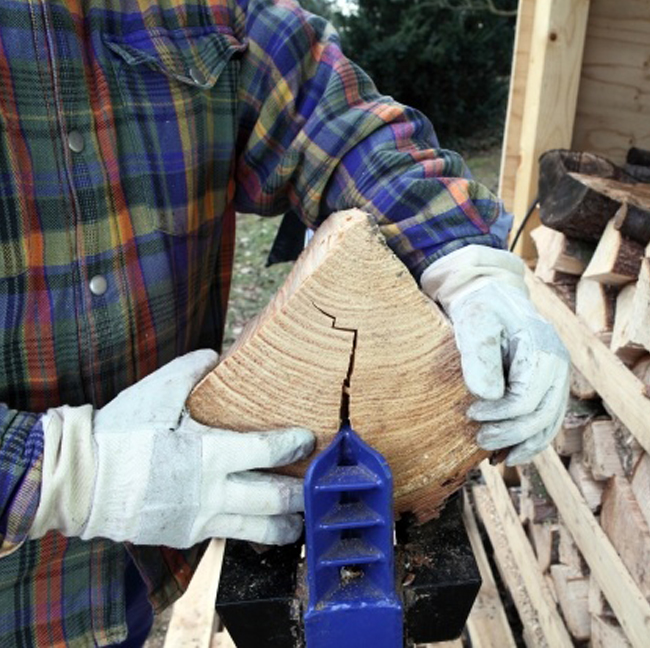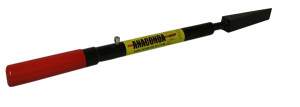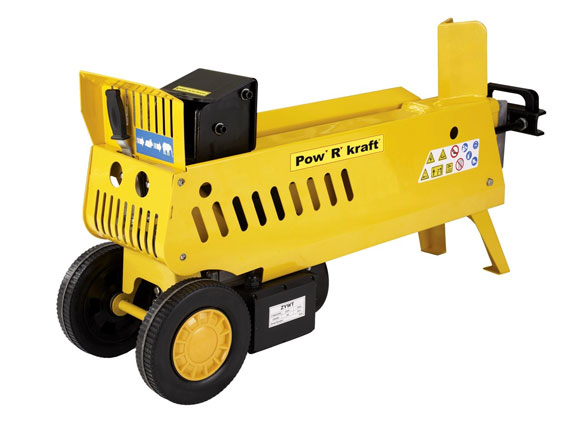All About Log Splitters
Learn about the types of log splitters (manual, impact, hydraulic, fuel-powered) available and the advantages of each log splitter. Learn wood log splitter safety.
Types of Log Splitters
Simple Steel Wedge
You can split wood by driving a simple steel wedge into a log with a sledge hammer. A better approach is to combine the wedge and sledge hammer into one tool called a splitting maul. It is much like a sledge hammer, but one end of the head is wedge-shaped. In a wood-chopping motion, you lift the splitting maul over your head and bring it down onto the end of a firewood log that is placed vertically. It may take several blows to split the log.
Impact Log Splitter
A bit more advanced is an impact splitter. These have a wedge at one end of a shaft and a sliding weight of 8-10 pounds at the other end.  By lifting the weight and then slamming it down onto the wedge, the operator splits the wood by means of the impact created when the weight falls on the wedge. This type of splitter is easier to use than a splitting maul and more powerful. It will even split through twisted grain or knots.
By lifting the weight and then slamming it down onto the wedge, the operator splits the wood by means of the impact created when the weight falls on the wedge. This type of splitter is easier to use than a splitting maul and more powerful. It will even split through twisted grain or knots.
Manual Hydraulic Log Splitter
The next step up is a manual hydraulic splitter. This device is made of two rails, a wedge, a piston, and a manually operated hydraulic pump. The user places a log on the rails with one end near the stationary wedge. At the other end of the rails is a small hydraulic pump. A handle increases pressure within the pump, driving a piston that pushes the log against the wedge. Manual hydraulic splitters can generate up to 10 tons of pressure.
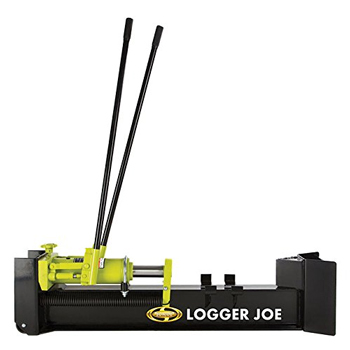 |
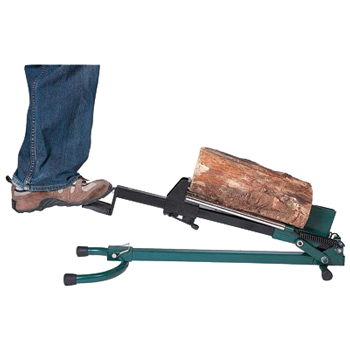 |
Powered Hydraulic Splitters
The top of the line is the gas – or electric-powered hydraulic log splitter. This device is much like the manual hydraulic splitter, but the power to operate it is supplied by an electric motor or by a gas or diesel powered engine. When you operate the hydraulic system’s valve, a ram pushes a wedge into the end of a firewood log, easily splitting it into two pieces. Some models even offer a ram that can split a log into four pieces. After each split, the hydraulic pump quickly pulls the ram back to its starting position. Electric or fuel powered splitters can generate up to 20 tons of pressure. They can cycle quickly so that split firewood piles up quickly.
Log Splitter Safety
- No matter which type of log splitter you use, the basic safety equipment is the same. You will need sturdy work gloves, steel toed boots and goggles.
- When using a splitting maul, the chief danger is hitting your foot or leg if the splitting maul misses the log or glances off of it. Take a firm stance with your feet placed apart to minimize this risk.
- Hydraulic splitters generate awesome forces on logs, causing splinters or chunks to fly off. Make sure your fire logs are cut with square ends to reduce this risk.
- Keep helpers and by-standers at least 10 feet away from the splitter.
- Always work in good light – sunlight or strong electric light.
- Keep hands away from the logs as they are being split.
- Remove jewelry, neckties, open shirts or jackets, and clothing with pull cords. Tie up long hair.
- Always turn the log splitter off when you are not actively using it.
